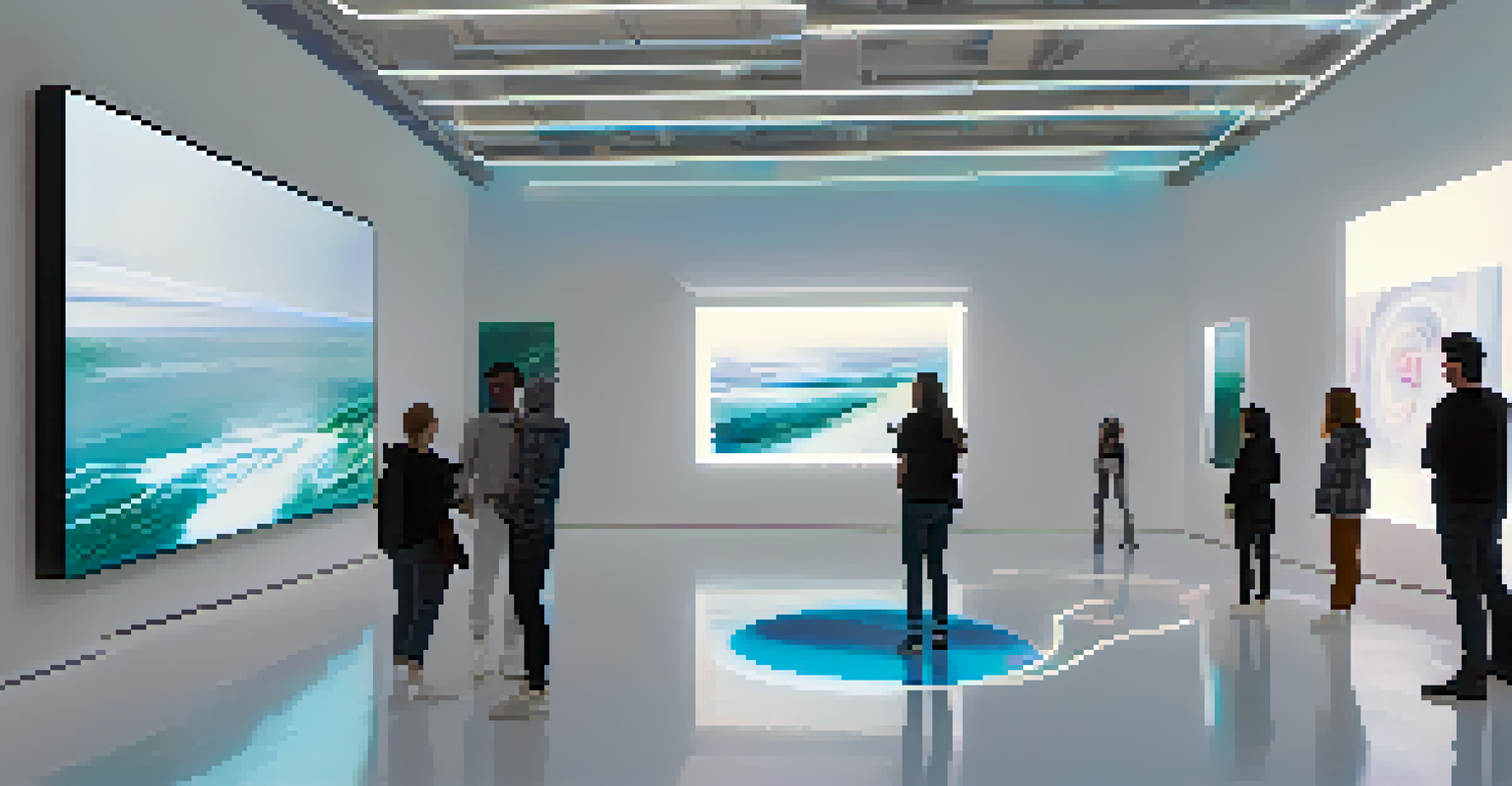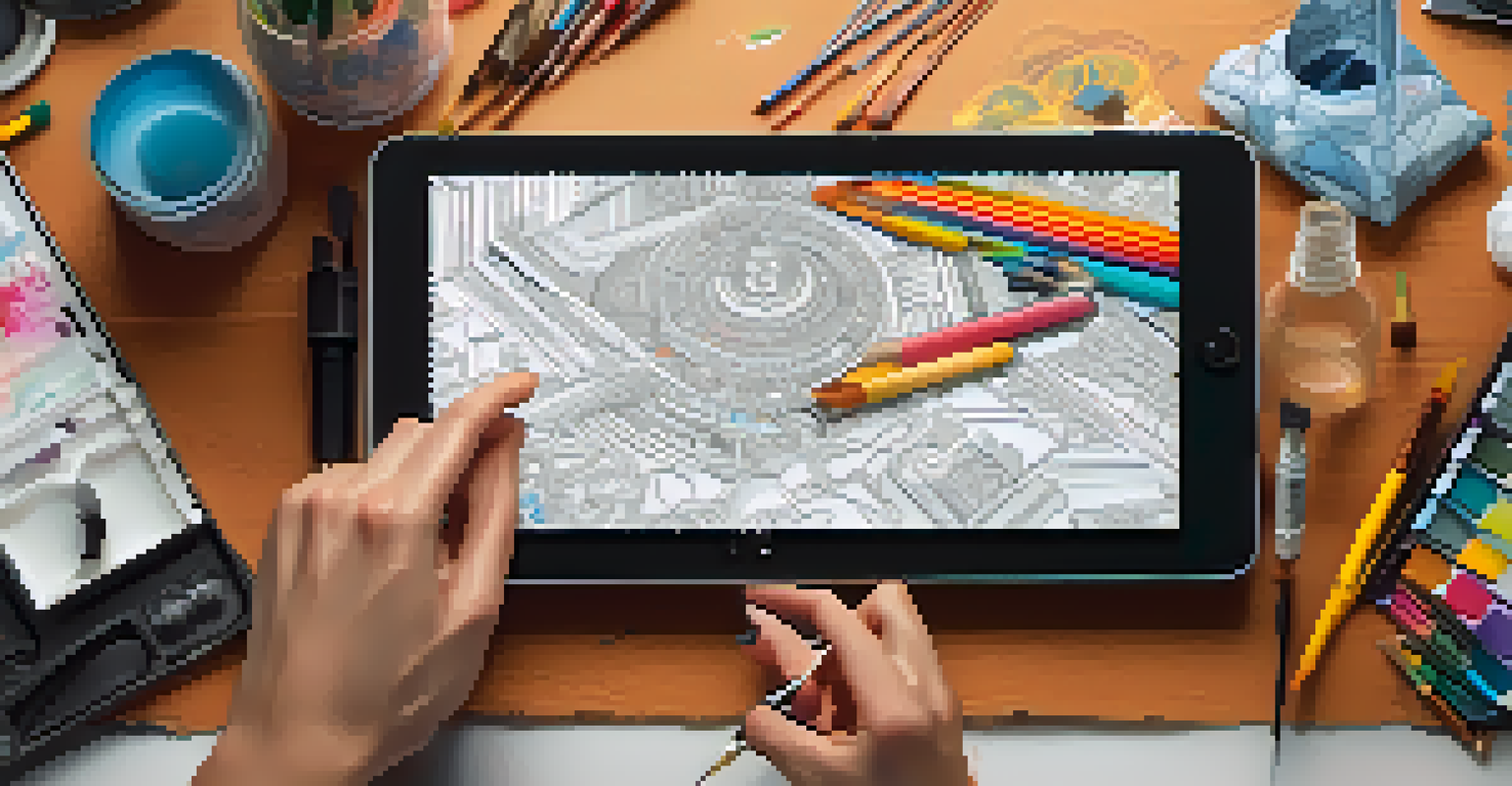NFTs on Ethereum: Empowering Artists in the Digital Marketplace

Understanding NFTs and Their Role in Art
Non-Fungible Tokens (NFTs) are unique digital assets verified using blockchain technology. Unlike cryptocurrencies like Bitcoin, which are interchangeable, each NFT represents a distinct item, often in the realm of art, music, or collectibles. This uniqueness gives artists the opportunity to monetize their digital creations in ways that were previously impossible.
The only limit to our realization of tomorrow will be our doubts of today.
For artists, NFTs offer a chance to retain ownership over their work and receive royalties from future sales. This means that every time an NFT is sold or resold, the creator can earn a percentage of the sale, ensuring they benefit from their art's ongoing value. This system empowers artists to take control of their financial futures.
Moreover, NFTs can enhance the connection between artists and their audiences. By purchasing an NFT, buyers often feel a sense of ownership and community, knowing they are supporting the artist directly. This shift is creating a more personal relationship between art creators and consumers in the digital age.
Ethereum: The Backbone of NFT Marketplaces
Ethereum is the leading platform for creating and trading NFTs, thanks to its robust smart contract capabilities. Smart contracts are self-executing contracts with the terms of the agreement directly written into code, allowing for transparent transactions without intermediaries. This innovative technology fosters trust and efficiency in the marketplace.

The growing popularity of Ethereum-based NFT marketplaces, such as OpenSea and Rarible, has made it easier for artists to showcase and sell their work. These platforms provide user-friendly interfaces that allow creators to mint (create) their NFTs quickly, often without needing extensive technical knowledge. This accessibility is critical in empowering more artists to enter the digital art space.
NFTs Empower Artists Financially
Non-fungible tokens allow artists to monetize their digital creations and earn royalties from future sales.
Additionally, Ethereum’s large user base means that artists can reach a wider audience. The more people involved in the ecosystem, the more potential buyers there are for an artist's work. This vibrant marketplace contributes to the overall growth and sustainability of digital art as a viable career path.
Case Studies: Successful Artists in the NFT Space
Many artists have found significant success by embracing NFTs. For instance, digital artist Beeple made headlines when his NFT artwork sold for a staggering $69 million at a Christie’s auction. This monumental sale not only showcased the potential of NFTs but also inspired countless other artists to explore this new medium.
Art is not freedom from discipline, but disciplined freedom.
Another inspiring example is the musician 3LAU, who sold an album as an NFT, allowing fans to own exclusive tracks and experiences. This innovative approach to music distribution not only generated substantial revenue for him but also created a unique way for fans to connect with his work. Such stories illustrate how NFTs can revolutionize traditional artistic practices.
These examples highlight the diverse potential within the NFT space, encouraging artists from various backgrounds to experiment and find their niche. As more creators share their stories of success, the NFT movement continues to gain momentum, pushing the boundaries of what is possible in the art world.
Challenges Artists Face in the NFT Arena
While NFTs provide many opportunities, artists also face challenges in navigating this new landscape. One significant hurdle is the environmental concerns associated with Ethereum's proof-of-work system, which consumes substantial energy. Artists are increasingly becoming aware of the impact of their choices and are seeking more sustainable alternatives.
Additionally, the NFT market can be volatile, with prices fluctuating dramatically based on trends and demand. This unpredictability can make it difficult for artists to establish consistent income streams. As a result, many creators are learning to diversify their revenue sources rather than relying solely on NFT sales.
Ethereum Drives NFT Market Growth
Ethereum's robust smart contract capabilities facilitate transparent NFT transactions, expanding access for artists.
Moreover, the sheer volume of NFTs available can make it challenging for individual artists to stand out. With thousands of new pieces flooding the market daily, effective marketing and community engagement are vital for gaining visibility. Artists must navigate this competitive landscape to ensure their work is seen and appreciated.
The Role of Community in NFT Success
Building a community around one’s work is crucial for artists entering the NFT space. Engaging with fans and other creators on social media platforms can help artists cultivate a loyal following. By sharing insights about their creative process and upcoming projects, artists can foster a sense of connection that extends beyond mere transactions.
Many NFT platforms also emphasize community-building features, such as forums and chat groups. These spaces allow artists to interact with supporters and gain valuable feedback. Such interactions can lead to collaborations, increased exposure, and a deeper understanding of audience preferences.
Ultimately, a strong community can be a powerful asset for an artist's success in the NFT market. When fans feel invested in an artist's journey, they are more likely to support them through purchases, shares, and word-of-mouth recommendations, amplifying an artist's reach and impact.
Future Trends in the NFT Art Market
The future of NFTs in the art world looks promising, with trends indicating continued growth and innovation. As more artists embrace digital mediums, the variety of NFT art will expand, leading to even more unique and creative works. This diversification will keep the market dynamic and engaging for collectors and enthusiasts alike.
Additionally, as technology evolves, we may see improvements in the environmental efficiency of blockchain systems. Emerging solutions, such as Ethereum 2.0, aim to reduce energy consumption and enhance scalability. These advancements could alleviate some concerns artists have about the sustainability of their practices.
Community Boosts Artist Visibility
Building a loyal community around their work helps artists engage with fans and increase their reach in the NFT space.
Furthermore, the integration of augmented reality (AR) and virtual reality (VR) into the NFT space is on the horizon. These technologies can provide immersive experiences for collectors, allowing them to interact with art in groundbreaking ways. As these trends develop, the NFT art market will likely continue to captivate audiences and encourage more artists to explore its potential.
Getting Started: Tips for Aspiring NFT Artists
For artists interested in entering the NFT space, the first step is to research and understand the basics of blockchain and NFTs. Familiarizing oneself with platforms like OpenSea or Rarible can help artists navigate the process of minting and selling their work. Taking the time to learn these fundamentals will provide a solid foundation for future endeavors.
Next, developing a unique style and voice is essential in a crowded marketplace. Artists should focus on creating work that reflects their identity and resonates with their audience. This authenticity will help them stand out and attract the right collectors who appreciate their vision.

Finally, building connections within the community can significantly impact an artist's success. Engaging with fellow creators, participating in discussions, and promoting one another’s work can foster a supportive network. This sense of community not only enriches the artistic journey but also opens doors to new opportunities.